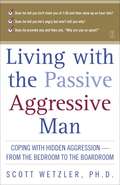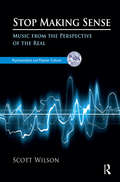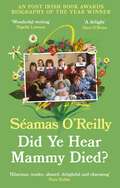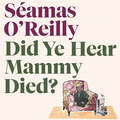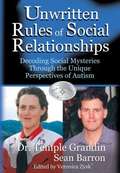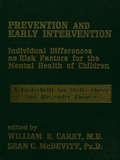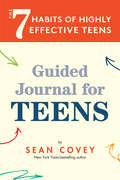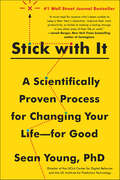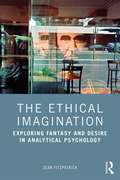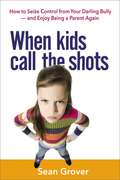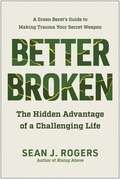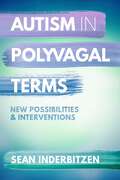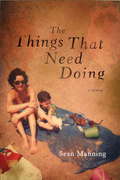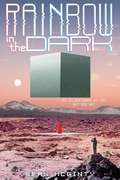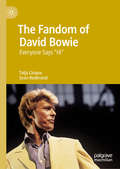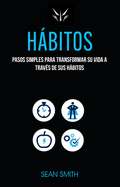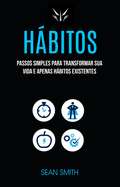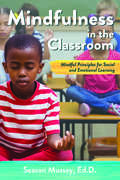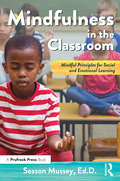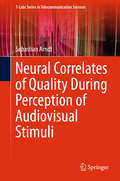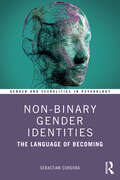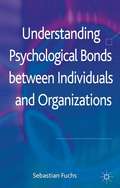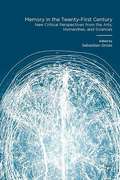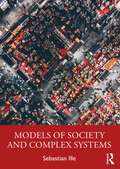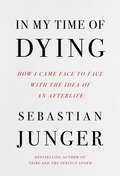- Table View
- List View
Living with the Passive-Aggressive Man
by Scott WetzlerDO YOU KNOW ONE OF THESE MEN? The catch-me-if-you-can lover... Phil's romantic and passionate one minute, distant and cold the next. The deviously manipulative coworker or boss... Jack denies resenting Nora's rapid rise in the company, but when they're assigned to work together on a project, he undermines her. The obstructionist, procrastinating husband... Bob keeps telling his wife he'll finish the painting job he began years ago, but he never seems to get around to it. These are all classic examples of the passive-aggressive man. This personality syndrome -- in which hostility wears a mask of passivity -- is currently the number one source of men's problems in relationships and on the job. In Living with the Passive-Aggressive Man, Scott Wetzler draws upon numerous case histories from his own practice to explain how and why the passive-aggressive man thinks, feels, and acts the way he does. Dr. Wetzler also offers advice on: How to avoid playing victim, manager, or rescuer to the "P-A" How to get his anger and fear into the open How to help the "P-A" become a better lover, husband, and father How to survive passive-aggressive game playing on the job Living with a man's passive aggression can be an emotional seesaw ride. But armed with this book, you can avoid the bumpy landings.
Stop Making Sense: Music from the Perspective of the Real (The\psychoanalysis And Popular Culture Ser.)
by Scott WilsonStop Making Sense offers an original and compelling theory of music "from the perspective of the real" as this term is understood according to the Lacanian orientation in psychoanalysis. Specific examples and cases discussed include Freud's melophobia, or fear of music; Che Guevara's revolutionary a-rhythmia; John F. Nash's obsession with "Bach's Little Fugue"; Talking Heads and Asperger's syndrome/autism; Yoko Ono and the sense of "lack" in the Beatles; the role of "Imagine" in the murder of John Lennon; Brian Eno and the digital auto-generation of Freud's 'oceanic feeling'; Aphex Twin and the brain-dance of the hikikomori; and the utopian promise of Merzbow. The first part of the book explains its theoretical and methodological underpinnings that are based in a reading of subjects and symptoms such as amusia. The second and third parts focus on contemporary examples that look at how music has become both a powerful locus of discontent and also a form of orientation in an age of generalized psychosis imposed by neoliberalism as a form of governance.
Did Ye Hear Mammy Died?: the bestselling memoir
by Seamas O'ReillyTHE IRISH TIMES NO. 1 BESTSELLER'Gorgeous' Pandora Sykes'A rare and beautiful book' Marian Keyes'Tender, sad and side-splittingly funny' Annie MacManus'A delight' Dara Ó BriainSéamas O'Reilly's mother died when he was five, leaving him, his ten brothers and sisters and their beloved father in their sprawling bungalow in rural Derry. It was the 1990s; the Troubles were a background rumble (most of the time), and Séamas at that point was more preoccupied with dinosaurs, Star Wars and the actual location of heaven than the political climate.Did Ye Hear Mammy Died? is a book about a family of argumentative, loud, musical, sarcastic, grief-stricken siblings, shepherded into adulthood by a man whose foibles and reticence were matched only by his love for his children and his determination that they would flourish. It is the moving, often amusing and completely unsentimental story of a boy growing up in a family bonded by love, loss and fairly relentless mockery.'A heartfelt tribute to an alarmingly large family held together by a quietly heroic father' Arthur Mathews, co-creator of Father Ted and Toast of London'Not only hilarious, tender, absurd, delightful and charming, but written with such skill as to render it unforgettable' Nina Stibbe
Did Ye Hear Mammy Died?: the bestselling memoir
by Seamas O'ReillyTHE IRISH TIMES NO. 1 BESTSELLERAN POST BIOGRAPHY OF THE YEAR'Gorgeous' Pandora Sykes'A rare and beautiful book' Marian Keyes'Tender, sad and side-splittingly funny' Annie MacManus'A delight' Dara Ó BriainSéamas O'Reilly's mother died when he was five, leaving him, his ten brothers and sisters and their beloved father in their sprawling bungalow in rural Derry. It was the 1990s; the Troubles were a background rumble (most of the time), and Séamas at that point was more preoccupied with dinosaurs, Star Wars and the actual location of heaven than the political climate.Did Ye Hear Mammy Died? is a book about a family of argumentative, loud, musical, sarcastic, grief-stricken siblings, shepherded into adulthood by a man whose foibles and reticence were matched only by his love for his children and his determination that they would flourish. It is the moving, often amusing and completely unsentimental story of a boy growing up in a family bonded by love, loss and fairly relentless mockery.'A heartfelt tribute to an alarmingly large family held together by a quietly heroic father' Arthur Mathews, co-creator of Father Ted and Toast of London'Not only hilarious, tender, absurd, delightful and charming, but written with such skill as to render it unforgettable' Nina Stibbe
The Unwritten Rules of Social Relationships: Decoding Social Mysteries Through the Unique Perspectives of Autism
by Temple Grandin Sean BarronBorn with autism, Sean Barron and Temple Grandin now famously live successful social lives. But their paths were very different. Temple's logical mind controlled her social behavior. She interacted with many adults and other children, experiencing varied social situations. Logic informed her decision to obey social rules and avoid unpleasant consequences. Sean's emotions controlled his social behavior. Baffled by social rules, isolated and friendless, he made up his own, and applied them to others. When they inevitably broke his rules, he felt worthless and unloved. Both Temple and Sean ultimately came to terms with the social world and found their places in it. Whether you are a person with autism, a caregiver in the autism community, or just someone interested in an "outsider" view of society, their powerful stories will enthrall and enlighten you.
Prevention And Early Intervention
by William B. Carey Sean C. McDevitPublished in 1994, Prevention And Early Intervention is a valuable contribution to the field of Psychiatry/clinical Psychology.
The 7 Habits of Highly Effective Teens: Guided Journal for Teens
by Sean CoveyA Guided Journal to Build Effective Habits and Transform Your Life“If you follow this simple process, I promise that you will see positive changes in your relationships and find a higher level of personal satisfaction in your life.” ―Sean Covey, New York Times bestselling author#1 New Release in Teen & Young Adult Psychology eBooksYou’re a busy teen in a stressful world. How do you manage your time and stay organized?Learn to stay motivated with new high-performance habits. The 7 Habits of Highly Effective Teens: Guided Journal offers journal prompts, worksheets, and exercises to help you accomplish all your short and long-term goals. Goal setting just got easier. When The 7 Habits of Highly Effective Teens was released as a card deck, a whole new approach to Stephen R. Covey’s time-tested principles was born. Now, this companion The 7 Habits of Highly Effective Teens: Guided Journal offers teens and young adults another way to turn inspiration into action. Its concise format is accessible and easy to stick with. Each habit is broken down into a weekly format inspiring both beginners and seasoned 7 Habits readers to get motivated, build confidence, and boost inspiration and personal growth.Cultivate success, skill, and self-growth. Featuring thought-provoking prompts, worksheets, and self-development quotes that show you how to achieve your goals, this is the ultimate guided self-growth journal for teens and young adults.Inside, find: Journaling prompts for self-discovery and for building confidence and self-esteem Worksheets for strategic time management and deeper understanding of the 7 Habits Self-motivation tips, exercises, and challenges for optimal goal achievementIf you enjoyed other Sean Covey bestsellers like A Self-Guided Workbook for Highly Effective Teens or The 7 Habits of Highly Effective Teens 52 Cards for Motivation and Growth Every Week of the Year, you’ll love The 7 Habits of Highly Effective Teens: Guided Journal.
Stick with It: A Scientifically Proven Process for Changing Your Life—for Good
by Sean D. Young#1 Wall Street Journal BestsellerAn award-winning psychologist and director of the UCLA Center for Digital Behavior shows everyone how to make real, lasting change in their lives in this exciting work of popular psychology that goes beyond The Power of Habit with science and practical strategies that can alter their problem behaviors—forever.Whether it’s absent-minded mistakes at work, a weakness for junk food, a smart phone addiction, or a lack of exercise, everyone has some bad habit or behavior that they’d like to change. But wanting to change and actually doing it—and sticking with it—are two very different things.Dr. Sean Young, an authoritative new voice in the field of behavioral science, knows a great deal about our habits—how we make them and how we can break them. Stick with It is his fascinating look at the science of behavior, filled with crucial knowledge and practical advice to help everyone successfully alter their actions and improve their lives.As Dr. Young explains, you don’t change behavior by changing the person, you do it by changing the process. Drawing on his own scientific research and that of other leading experts in the field, he explains why change can be difficult and identifies the crucial forces that combine to make transformation permanent, from the right way to create new habits to how to harness emotional meaning to motivate change. He also helps us understand how the mind often interferes with creating lasting change and how we can outsmart it, including using "neurohacks" to shortcut the brain’s counterproductive instincts. In addition he provides a powerful corrective to the decades old science of habits, offering a next generation discussion of how habits can change behavior with the right approach.Packed with pragmatic exercises and stories of real people who have used them successfully, Stick with It shows that it is possible to control spending, stick to a diet, become more social, exercise regularly, stop compulsively checking e-mail, and overcome problem behaviors—forever.
The Ethical Imagination: Exploring Fantasy and Desire in Analytical Psychology
by Sean FitzpatrickWhat do we do with our fantasies? Are there right and wrong ways to imagine, feel, think, or desire? Do we have our fantasies, or do they have us? In The Ethical Imagination: Exploring Fantasy and Desire in Analytical Psychology, Sean Fitzpatrick explores how our obligation to the Other extends to our most intimate spaces. Informed by Jungian psychology and the philosophy of Emmanuel Levinas, Fitzpatrick imagines an ethical approach that can negotiate the delicate and porous boundary between inner and outer, personal and collective fantasy. Combining both theory and practice, the book examines theorists of the imagination, such as Plato, Coleridge, Sartre, and Richard Kearney, explores stories from contemporary culture, such as Jimmy Carter and New York’s "Cannibal Cop", and includes encounters in the consulting room. The Ethical Imagination explores how these questions have been asked in different ways across culture and history, and Fitzpatrick examines the impact of our modern, digital world on ethics and imagination. In this original examination of the ethical status of our imagination, this book illustrates how our greatest innovations, works of art, and acts of compassion emerge from the human imagination, but so also do our horrific atrocities. Fitzpatrick compellingly demonstrates that what and how we imagine matters. Unique and innovative, this book will be of immense interest to Jungian psychotherapists, analytical psychologists, and other mental health professionals interested in the ethics, the imagination, and clinical work with fantasy. It will also be an important book for academics and students of Jungian and post-Jungian studies, philosophy, religious studies, and ethics.
When Kids Call the Shots: How to Seize Control from Your Darling Bully -- and Enjoy Being a Parent Again
by Sean GroverIf you want to fix your rebellious and disrespectful child, you need to start by fixing yourself.Are your kids pummeling you with demands and bossing you around with impunity? Have your once-precious preschoolers become rebellious, entitled, and disrespectful to authority? While there are plenty of so-called experts who might try to validate your convictions that you have done all you can to &“fix&” your &“difficult&” children, the hard truth is, they&’re not doing you any favors by placing the responsibility solely on your children. Parenting struggles rarely originate from just one side. Instead, they erupt at the volatile intersection of a child's personality with a parent's own insecurities and behaviors.In When Kids Call the Shots, therapist and parenting expert Sean Grover untangles the forces driving family dysfunction, and helps parents assume their leadership roles once again. Parents will discover:Three common bullying styles used by kidsParenting styles that contribute to power balancesCritical testing periods in a child&’s developmentCoping mechanisms that backfirePersonalized plans for calmly exerting authority in any scenarioThe solution to any problem begins with learning to control what you can control. In parenting, you&’ve already learned how impossible it is to control your kids. Begin by controlling you!
Better Broken: The Hidden Advantage of a Challenging Life
by Sean J. RogersYour trauma is your tactical advantage. Harness it to create the life of your dreams. From enduring an abusive childhood to fighting as a Special Forces Green Beret in the war in Afghanistan, Sean Rogers has come away from his hardships with the tools necessary to not only survive but thrive. He knows firsthand what it means to face your trauma and use it as a source for incredible strength. In Better Broken, Rogers helps readers from all walks of life harness their trauma for good, by: Identifying, accepting, and embracing your own personal triggers and faults Learning when change needs to come from within, and when you can change your environment instead Overcoming a victim mindset and developing the agency required to take control of your life Translating your behavioral growth to financial growth Taking care of your mind, body, and spirit—and building the habits you need to stay healthy Your past doesn&’t have to hold you back anymore. It&’s not only possible to overcome your trauma, but to let it strengthen you—and help you become unstoppable.
Autism in Polyvagal Terms: New Possibilities and Interventions (Norton Series on Interpersonal Neurobiology #0)
by Sean M. InderbitzenA vital new framework for working with clients on the spectrum. By presenting the autism diagnosis through the lens of a disordered nervous system—that is, by applying Polyvagal Theory—this book opens new avenues for intervention and treatment, while challenging age-old assumptions of what autism means and how it presents itself. Sean Inderbitzen, an autistic therapist, encourages clinicians to conceptualize their work with autistic clients through a polyvagal lens. Inderbitzen argues that individuals with autism can access their ventral vagal nervous system to promote flexibility and connection to others, and effective polyvagal theory ideas and exercises can help their clients do so. An essential new text for anyone who works clients on the spectrum, this book explores approaches such as motivational interviewing, clinical social work pedagogy, sensorimotor psychotherapy, mindfulness, biofeedback, and cultivating a sense of safety in sessions.
The Things That Need Doing: A Memoir
by Sean Manning"You keep fighting, okay?" I whispered. "We're in this together. You and me. You're not alone. You hear me? You are not alone." 5:38pm. It was the precise moment Sean Manning was born and the time each year that his mother wished him happy birthday. But just before he turned twenty-seven, their tradition collapsed. A heart attack landed his mom in the hospital and uprooted Manning from his life in New York. What followed was a testament to a family's indestructible bond--a life-changing odyssey that broke a boy and made a man--captured here in Manning's indelible memoir.
Rainbow in the Dark
by Sean McGintyThe Wizard of Oz meets Ready Player One in this darkly comic YA novel about identity, depression, giving up, and finding your way home.High school senior Rainbow is trapped with three other teens in a game-like world that may or may not be real. Together, they must complete quests and gain experience in order to access their own forgotten memories, decode what has happened to them, and find a portal home. As Rainbow&’s memories slowly return, the story of a lonely teen facing senior year as the new kid in a small town emerges. Surreal, absurdist humor balances sensitively handled themes of suicide, depression, and the search for identity in an unpredictable and ultimately hopeful page-turner that's perfect for fans of Shaun David Hutchinson, Adam Silvera, and Libba Bray's Going Bovine.
The Fandom of David Bowie: Everyone Says "Hi"
by Sean Redmond Toija CinqueBuilt from stories and memories shared by self-defined David Bowie fans, thisbook explores how Bowie existed as a figure of renewal and redemption,resonating in particular with those marginalized by culture and society. SeanRedmond and Toija Cinque draw on personal interviews, memorabilia, diaries,letters, communal gatherings and shared conversation to find out why Bowiemattered so much to the fans that idolized him. Contextualising the identification streams that have emerged around David Bowie, the book highlights his remarkable influence.
Hábitos: Pasos Simples Para Transformar Su Vida a Través De Sus Hábitos
by Sean SmithEste libro le enseñará las cosas que realmente necesita para tener éxito: desarrollar buenos hábitos. El libro explica por qué los hábitos son poderosos, cómo los hábitos se convierten en hábitos y cómo reemplazar los malos por los buenos creando así un nuevo "usted" y preparándolo para el éxito. No necesita esas exageradas historias que garantizan el éxito de la noche a la mañana para motivarle a alcanzar niveles más altos. Lo que necesita es desarrollar los mismos hábitos que tienen las personas exitosas para impulsarlo al éxito. Este libro ha sido diseñado y adaptado solo para usted. Desarrollar la fortaleza mental a través de las técnicas de este libro lo ayudará a aumentar su confianza en sí mismo y a aumentar la resistencia y la responsabilidad para cumplir sus objetivos.
Hábitos: Passos Simples Para Transformar Sua Vida E Apenas Hábitos Existentes
by Sean SmithUm hábito é algo que é realizado sem pensar. Se uma pessoa precisar ser lembrada para fazer alguma coisa, isso não é um hábito. Se eles fizerem isso ou precisarem forçar a lo-lo, isso não é um hábito. Não é exagero dizer que um hábito é natural para uma pessoa que possui como respirar. Um mordedor de unhas habitual, por exemplo, pode nem perceber que está fazendo isso. É por isso que a quebra de hábitos geralmente requer intervenção vigorosa. Por exemplo, os mordedores de unhas pintam um verniz amargo nas unhas para serem alertados toda vez que colocam os dedos na boca. Os usuários habituais de mídia social instalam o software que bloqueia ativamente ou usa a mídia social durante as datas do dia. Esses tipos de alteração tornam-se as pessoas mais conscientes de seus hábitos, e a conscientização é o primeiro passo para interromper-los.
Mindfulness in the Classroom: Mindful Principles for Social and Emotional Learning
by Season MusseyMindfulness can be used in the classroom as a method to increase overall teacher effectiveness, raise student achievement, and reignite the joy of teaching and learning. "Mindfulness in the Classroom" introduces eight mindful principles that support social and emotional learning for teachers and students in today's schools, leading to increased empathy, kindness, self-awareness, integrity, self-control, and honesty. The book provides an introduction and theoretical overview of mindfulness, followed by a discussion of the eight mindful principles. Research-based evidence is presented alongside differentiated teaching activities and classroom examples, helping to bridge the gap from theory to practice. Larger implications for schools and society are also discussed, including a call to use these principles to teach the whole child. Mindfulness in the Classroom offers teachers and students a guide for the journey back to the heart of teaching and learning.
Mindfulness in the Classroom: Mindful Principles for Social and Emotional Learning
by Season MusseyMindfulness can be used in the classroom as a method to increase overall teacher effectiveness, raise student achievement, and reignite the joy of teaching and learning. Mindfulness in the Classroom introduces eight mindful principles that support social and emotional learning for teachers and students in today's schools, leading to increased empathy, kindness, self-awareness, integrity, self-control, and honesty. The book provides an introduction and theoretical overview of mindfulness, followed by a discussion of the eight mindful principles. Research-based evidence is presented alongside differentiated teaching activities and classroom examples, helping to bridge the gap from theory to practice. Larger implications for schools and society are also discussed, including a call to use these principles to teach the whole child. Mindfulness in the Classroom offers teachers and students a guide for the journey back to the heart of teaching and learning.
Neural Correlates of Quality During Perception of Audiovisual Stimuli
by Sebastian ArndtThis book presents a new approach to examining the perceived quality of audiovisual sequences. It uses electroencephalography (EEG) to explain in detail how user quality judgments are formed within a test participant, and what the physiological implications might be when subjects are exposed to lower quality media. The book redefines the experimental paradigms of using EEG in the area of quality assessment so that they better suit the requirements of standard subjective quality testing, and presents experimental protocols and stimuli that have been adjusted accordingly.
Non-Binary Gender Identities: The Language of Becoming (Gender and Sexualities in Psychology)
by Sebastian CordobaNon-Binary Gender Identities examines how non-binary people discover, adopt, and negotiate language in a variety of social settings, both offline and online. It considers how language, in the form of gender-neutral pronouns, names, and labels, is a central aspect of identity for many and has been the subject of much debate in recent years. Cordoba captures the psychological, social, and linguistic experiences of non-binary people by illustrating the multiple, complex, and evolving ways in which non-binary people use language to express their gender identities, bodies, authenticity, and navigate social interactions – especially those where their identities are not affirmed. These findings shed light on the gender and linguistic becomings of non-binary people, a pioneering theoretical framework developed in the book, which reflects the dynamic realities of language, subjectivities, and the materiality of the body. Informed by these findings, the text offers recommendations for policy makers and practitioners, designed to facilitate gender-related communication and decrease language-related distress on non-binary people, as well as the general population. This important book advances our understanding of non-binary gender identities by employing innovative methodologies – including corpus-based research and network visualisation – furthering and developing theory, and yielding original insights. It is essential reading for students and academics in social psychology and gender studies, as well as anyone interested in furthering their understanding of non-binary gender identities.
Understanding Psychological Bonds between Individuals and Organizations
by Sebastian FuchsOrganizations operating in competitive environments habitually seek ever-new avenues to increase and optimize the performance of their individual employees. One popular device to increase employees' performance, especially those elements of performance that are left to the discretion of an individual, refers to the idea of creating a strong, meaningful psychological bond between an individual and an organization. Understanding Psychological Bonds between Individuals and Organizations looks at precisely this device and proposes a novel, integrated and comprehensive model which investigates the different mechanisms that help to explain such psychological bonds.
Memory in the Twenty-First Century: New Critical Perspectives from the Arts, Humanities, and Sciences
by Sebastian GroesThis book maps and analyses the changing state of memory at the start of the twenty-first century in essays written by scientists, scholars and writers. It recontextualises memory by investigating the impact of new conditions such as the digital revolution, climate change and an ageing population on our world.
Models of Society and Complex Systems
by Sebastian IlleModels of Society and Complex Systems introduces readers to a variety of different mathematical tools used for modelling human behaviour and interactions, and the complex social dynamics that drive institutions, conflict, and coordination. What laws govern human affairs? How can we make sense of the complexity of societies and how do individual actions, characteristics, and beliefs interact? Social systems follow regularities which allow us to answer these questions using different mathematical approaches. This book emphasises both theory and application. It systematically introduces mathematical approaches, such as evolutionary and spatial game theory, social network analysis, agent-based modelling, and chaos theory. It provides readers with the necessary theoretical background of each toolset as well as the underlying intuition, while each chapter includes exercises and applications to real-world phenomena. By looking behind the surface of various social occurrences, the reader uncovers the reasons why social systems exhibit both cultural universals and at the same time a diversity of practices and norms to a degree that even surpasses biological variety, or why some riots turn into revolutions while others do not even make it into the news. This book is written for any scholar in the social sciences interested in studying and understanding human behaviour, social dynamics, and the complex systems of society. It does not expect readers to have a particular background apart from some elementary knowledge and affinity for mathematics.
In My Time of Dying: How I Came Face to Face with the Idea of an Afterlife
by Sebastian JungerA near-fatal health emergency leads to this powerful reflection on death—and what might follow—by the bestselling author of Tribe and The Perfect Storm. For years as an award-winning war reporter, Sebastian Junger traveled to many front lines and frequently put his life at risk. And yet the closest he ever came to death was the summer of 2020 while spending a quiet afternoon at the New England home he shared with his wife and two young children. Crippled by abdominal pain, Junger was rushed to the hospital by ambulance. Once there, he began slipping away. As blackness encroached, he was visited by his dead father, inviting Junger to join him. “It’s okay,” his father said. “There’s nothing to be scared of. I’ll take care of you.” That was the last thing Junger remembered until he came to the next day when he was told he had suffered a ruptured aneurysm that he should not have survived.This experience spurred Junger—a confirmed atheist raised by his physicist father to respect the empirical—to undertake a scientific, philosophical, and deeply personal examination of mortality and what happens after we die. How do we begin to process the brutal fact that any of us might perish unexpectedly on what begins as an ordinary day? How do we grapple with phenomena that science may be unable to explain? And what happens to a person, emotionally and spiritually, when forced to reckon with such existential questions?In My Time of Dying is part medical drama, part searing autobiography, and part rational inquiry into the ultimate unknowable mystery.
